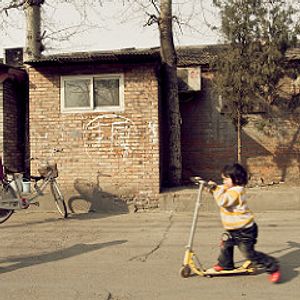“Beijing welcomes you” is the feature song for the 2008 Beijing Olympics. The city also used the five characters of the song’s Chinese title –Bei Jing Huan Ying Ni — to name the five mascots for the Games. However, in 2017, it seems to be a question whether Beijing still welcomes everyone. In the name of making Beijing “a world-class harmonious and livable city,” China aims to limit Beijing’s population to 23 million by 2020 and maintain it at that level in the long run.
On September 27, the top Chinese authorities — the Central Committee of the Chinese Communist Party (CCP) and the State Council — approved the general city plan for Beijing 2016-2035 and issued a statement, vowing to make Bejing “a world-class harmonious and livable city.” In the statement, the authorities demanded Beijing to “strictly control the city’s scale” and set a 23 million permanent population cap by 2020. The statement elaborated on the sectors Beijing would welcome:
Beijing is the capital of China; it is the national political center, the cultural center, the international communication center, and the science and technology center…[Beijing should] strengthen the functions of the “four centers” … by focusing on the sectors including science and technology, finance, cultural and creative services, integrated circuits, new energy and other high-tech and emerging industries…and unwaveringly remove its non-capital functions.
In addition, the statement also pledged to protect Beijing’s heritage sites and limited Beijing’s urban scale:
The historic city should not be torn down anymore, and the destroyed part should be restored…the construction land in the city should be reduced to about 2,860 square km by 2020 and to 2,760 square km by 2035.
To show its determination, the statement emphasized that the population cap, the ecological protection area, and the urban development scale are the “three red lines” that Beijing should not cross.
In fact, the Beijing municipal government had been implementing the plan months before the statement was issued. In order to “remove Beijing’ non-capital functions and control the city’s population,” Cai Qi, the leader of Beijing city, launched an operation in January, demanding to tear down all “illegal constructions” and relocate unwelcome enterprises and multiple wholesale markets in the city.
Under the operation, by the end of August, the “illegal constructions” amounting to 38.34 million square meters have been demolished; 599 manufacturing enterprises have been removed; 1164 other enterprises have been closed down; and 90 big wholesale markets have been either torn down or updated to shopping malls. Instead, 25 new city parks will be built upon the previous locations, the city’s Development and Reform Commission declared, without clarifying where should those people involved go.
Actually, it is exactly the fundamental goal the city aims to achieve: getting rid of those people who are not welcome, or to be more specific, those non-local people who are labelled as “the lower class” by some Chinese experts.
While the city government was eager to publicize its pretty achievements, it tactically downplayed the dark side of the operation: multiple migrant schools have been or are being demolished by the government and thousands of migrant workers’ childrens are out of school.
Wei Jiayu, a researcher of a Beijing-based education non-profit group, told the Financial Times, “Migrant schools are unfortunately just one fragment that has been swept away by this whole depopulation wave.”
































